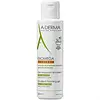What's inside
What's inside
 Key Ingredients
Key Ingredients

 Benefits
Benefits

 Concerns
Concerns

 Ingredients Side-by-side
Ingredients Side-by-side

Water
Skin ConditioningCaprylic/Capric Triglyceride
MaskingGlycerin
HumectantCetearyl Alcohol
EmollientNiacinamide
Smoothing10-Hydroxydecenoic Acid
Skin ConditioningAvena Sativa Leaf/Stem Extract
Skin ConditioningBenzoic Acid
MaskingCaprylyl Glycol
EmollientCetearyl Glucoside
EmulsifyingCetyl Alcohol
EmollientGlyceryl Stearate
EmollientOenothera Biennis Oil
EmollientPEG-100 Stearate
Polyacrylate-13
Polyisobutene
Polysorbate 20
EmulsifyingSodium Hydroxide
BufferingSorbitan Isostearate
EmulsifyingTocopherol
AntioxidantTocopheryl Acetate
AntioxidantWater, Caprylic/Capric Triglyceride, Glycerin, Cetearyl Alcohol, Niacinamide, 10-Hydroxydecenoic Acid, Avena Sativa Leaf/Stem Extract, Benzoic Acid, Caprylyl Glycol, Cetearyl Glucoside, Cetyl Alcohol, Glyceryl Stearate, Oenothera Biennis Oil, PEG-100 Stearate, Polyacrylate-13, Polyisobutene, Polysorbate 20, Sodium Hydroxide, Sorbitan Isostearate, Tocopherol, Tocopheryl Acetate
Water
Skin ConditioningDisodium Cocoamphodiacetate
CleansingPEG-7 Glyceryl Cocoate
EmulsifyingDecyl Glucoside
CleansingPolysorbate 20
EmulsifyingSodium Chloride
MaskingCeteareth-60 Myristyl Glycol
EmulsifyingSorbitol
HumectantGlycerin
HumectantPEG-200 Hydrogenated Glyceryl Palmate
Cleansing10-Hydroxydecenoic Acid
Skin ConditioningAvena Sativa Leaf/Stem Extract
Skin ConditioningBenzoic Acid
MaskingCitric Acid
BufferingGlyceryl Laurate
EmollientLactic Acid
BufferingMaltodextrin
AbsorbentOenothera Biennis Oil
EmollientTocopherol
AntioxidantWater, Disodium Cocoamphodiacetate, PEG-7 Glyceryl Cocoate, Decyl Glucoside, Polysorbate 20, Sodium Chloride, Ceteareth-60 Myristyl Glycol, Sorbitol, Glycerin, PEG-200 Hydrogenated Glyceryl Palmate, 10-Hydroxydecenoic Acid, Avena Sativa Leaf/Stem Extract, Benzoic Acid, Citric Acid, Glyceryl Laurate, Lactic Acid, Maltodextrin, Oenothera Biennis Oil, Tocopherol
Ingredients Explained
These ingredients are found in both products.
Ingredients higher up in an ingredient list are typically present in a larger amount.
We don't have a description for 10-Hydroxydecenoic Acid yet.
We don't have a description for Avena Sativa Leaf/Stem Extract yet.
Benzoic Acid is used to preserve and adjust the pH of products.
The antimicrobial property of Benzoic Acid helps elongate a product's shelf life. Its main role is to reduce fungi growth and is not found to be effective at fighting bacteria. Therefore Benzoic Acid is always added along with other preservatives.
In its pure form, Benzoic Acid looks like a white crystalline solid. It has slight solubility in water.
The name of Benzoic Acid comes from gum benzoin, which used to be the sole source of deriving this ingredient. Benzoic Acid is the most simple aromatic carboxylic acid.
Benzoic Acid is naturally occuring in strawberries, mustard, cinnamon, and cloves. It has a slight scent but is not considered to be a fragrance.
Learn more about Benzoic AcidGlycerin is already naturally found in your skin. It helps moisturize and protect your skin.
A study from 2016 found glycerin to be more effective as a humectant than AHAs and hyaluronic acid.
As a humectant, it helps the skin stay hydrated by pulling moisture to your skin. The low molecular weight of glycerin allows it to pull moisture into the deeper layers of your skin.
Hydrated skin improves your skin barrier; Your skin barrier helps protect against irritants and bacteria.
Glycerin has also been found to have antimicrobial and antiviral properties. Due to these properties, glycerin is often used in wound and burn treatments.
In cosmetics, glycerin is usually derived from plants such as soybean or palm. However, it can also be sourced from animals, such as tallow or animal fat.
This ingredient is organic, colorless, odorless, and non-toxic.
Glycerin is the name for this ingredient in American English. British English uses Glycerol/Glycerine.
Learn more about GlycerinOenothera Biennis Oil is the fixed oil derived from the seeds of the Evening Primrose.
Evening primrose oil is rich in fatty acids. These fatty acids include linoleic (60-85%), oleic (5-12%), palmitic (4-10%), and stearic (2-4%).
The fatty acid composition makes it a great ingredient for soothing and moisturizing skin. However, it may not be Malassezia folliculitis, or fungal acne safe.
Further research is needed on the role of evening primrose in treating eczema.
Evening primrose is native to North America.
Learn more about Oenothera Biennis OilPolysorbate 20 is made by combining ethoxylation of sorbitan, ethylene oxide, and lauric acid. It is a mild cleansing agent, surfactant, and emulsifier.
As a surfactant, it helps collect dirt and oils for washing. Emulsifiers prevent oils and water from separating.
Polysorbate 20 also adds scent to a product. Since it is made using sorbitol, it has a sweet scent. Sorbitol can also be found in fruits such as apples and peaches.
The lauric acid used to create Polysorbate 20 is often derived from coconuts.
Polysorbate 20 may not be fungal acne safe.
Learn more about Polysorbate 20Tocopherol (also known as Vitamin E) is a common antioxidant used to help protect the skin from free-radicals and strengthen the skin barrier. It's also fat soluble - this means our skin is great at absorbing it.
Vitamin E also helps keep your natural skin lipids healthy. Your lipid skin barrier naturally consists of lipids, ceramides, and fatty acids. Vitamin E offers extra protection for your skin’s lipid barrier, keeping your skin healthy and nourished.
Another benefit is a bit of UV protection. Vitamin E helps reduce the damage caused by UVB rays. (It should not replace your sunscreen). Combining it with Vitamin C can decrease sunburned cells and hyperpigmentation after UV exposure.
You might have noticed Vitamin E + C often paired together. This is because it is great at stabilizing Vitamin C. Using the two together helps increase the effectiveness of both ingredients.
There are often claims that Vitamin E can reduce/prevent scarring, but these claims haven't been confirmed by scientific research.
Learn more about TocopherolWater. It's the most common cosmetic ingredient of all. You'll usually see it at the top of ingredient lists, meaning that it makes up the largest part of the product.
So why is it so popular? Water most often acts as a solvent - this means that it helps dissolve other ingredients into the formulation.
You'll also recognize water as that liquid we all need to stay alive. If you see this, drink a glass of water. Stay hydrated!
Learn more about Water